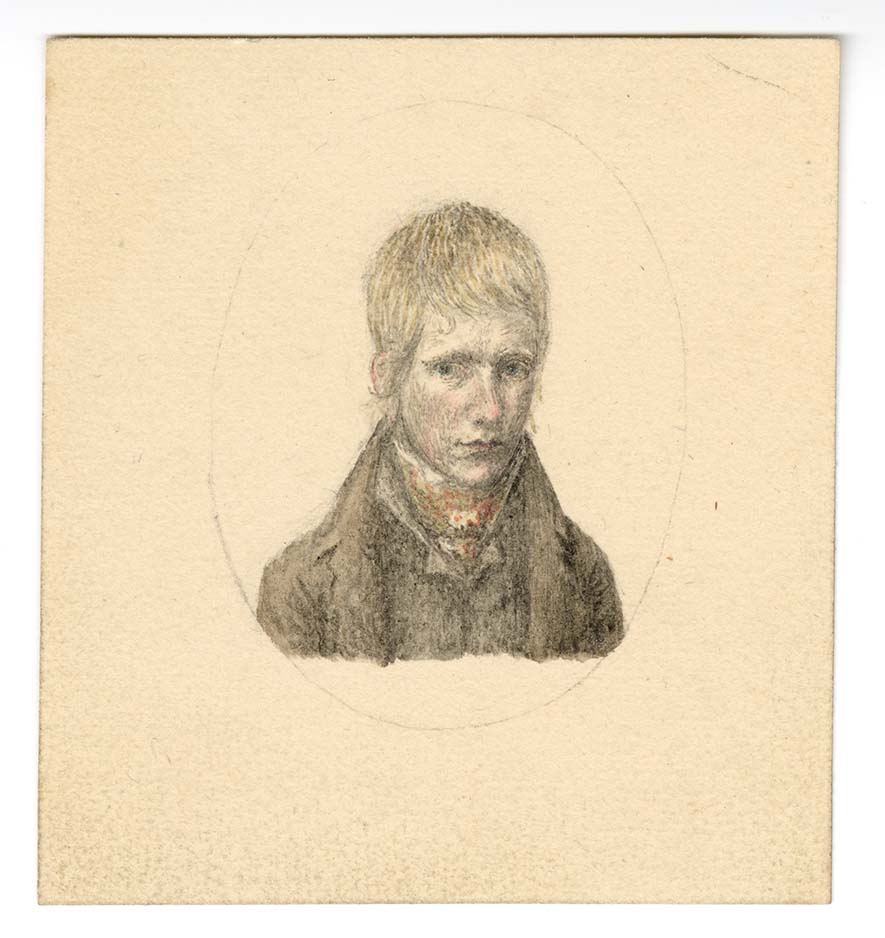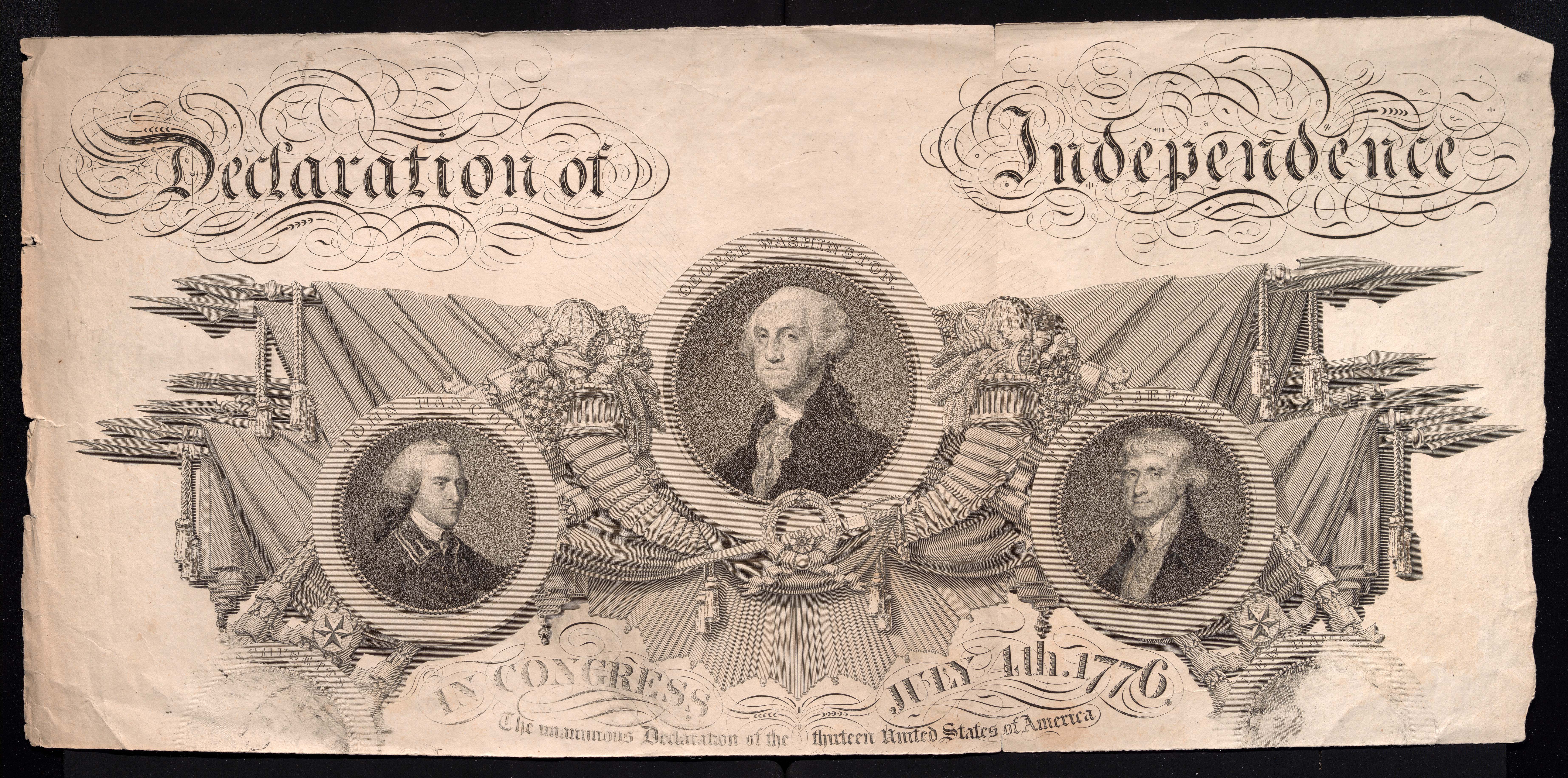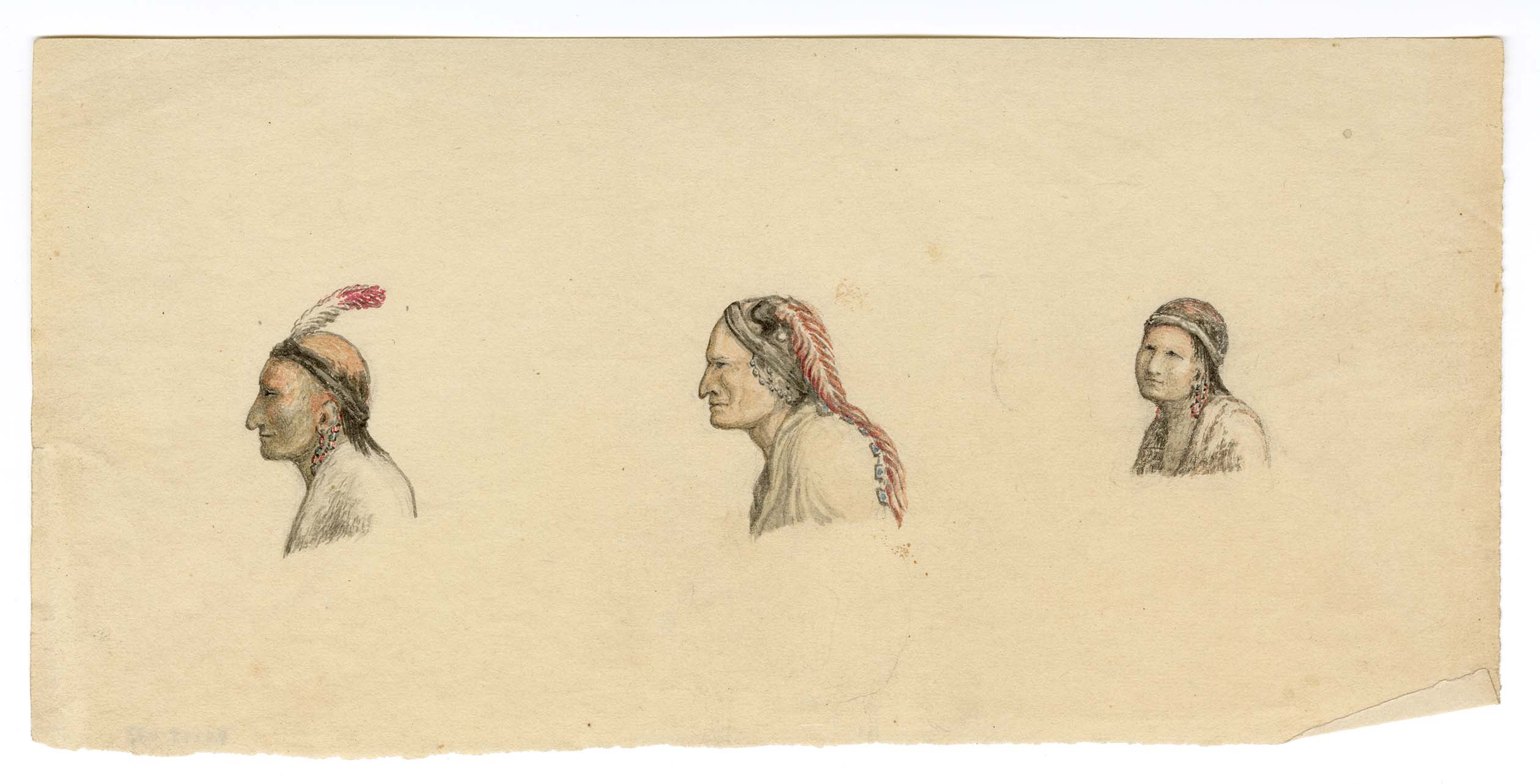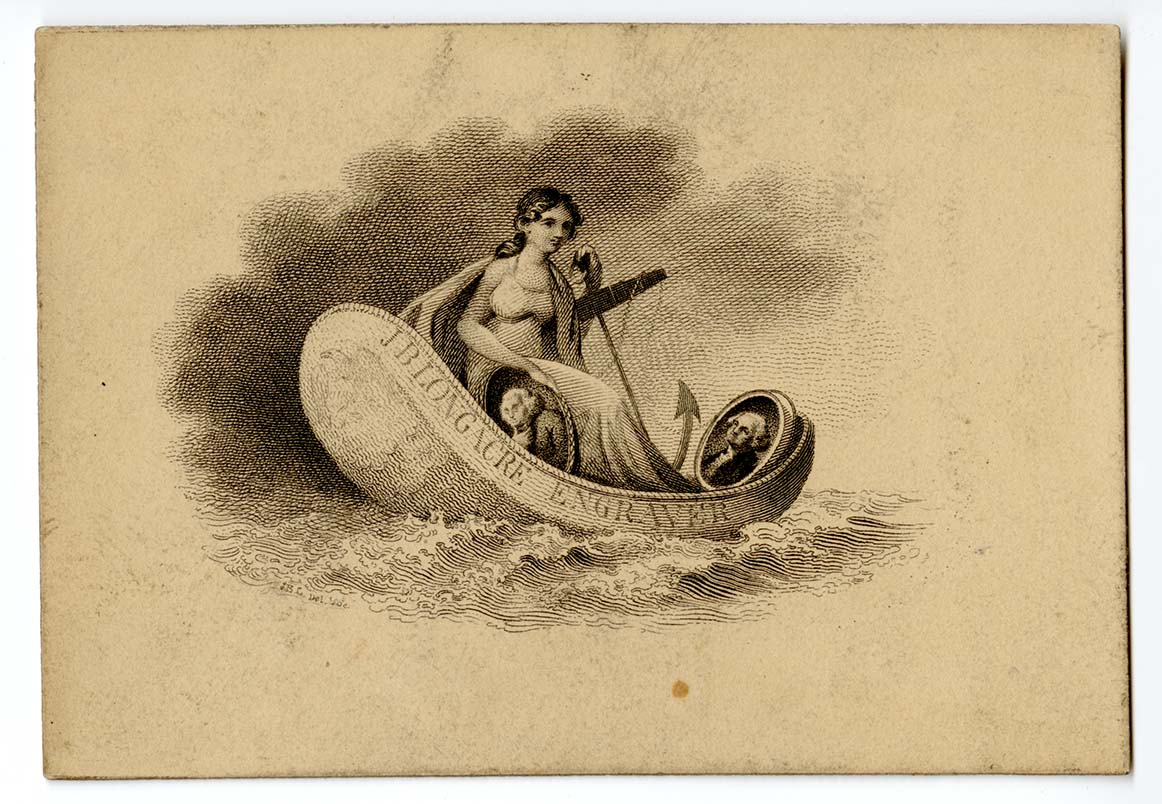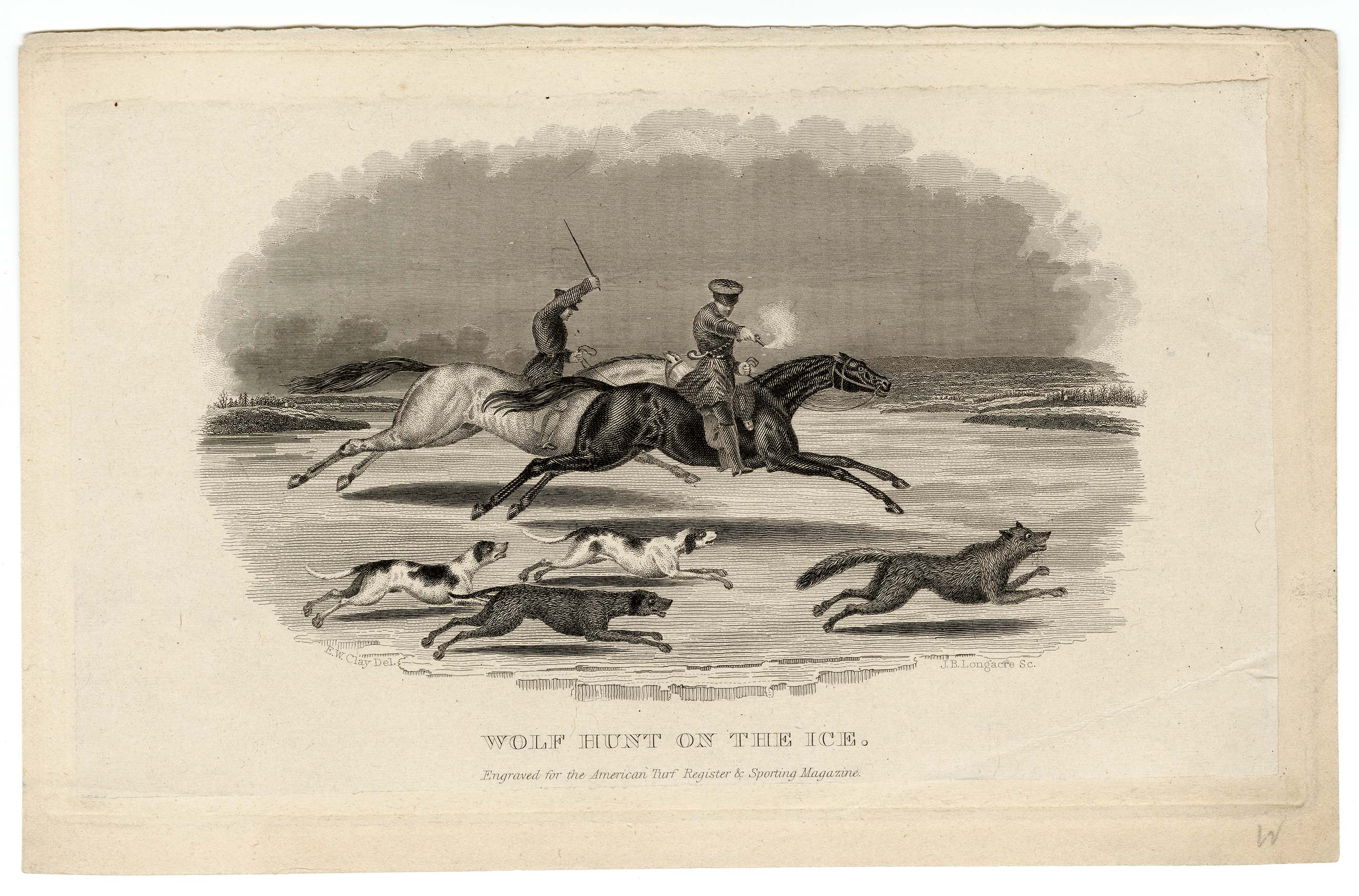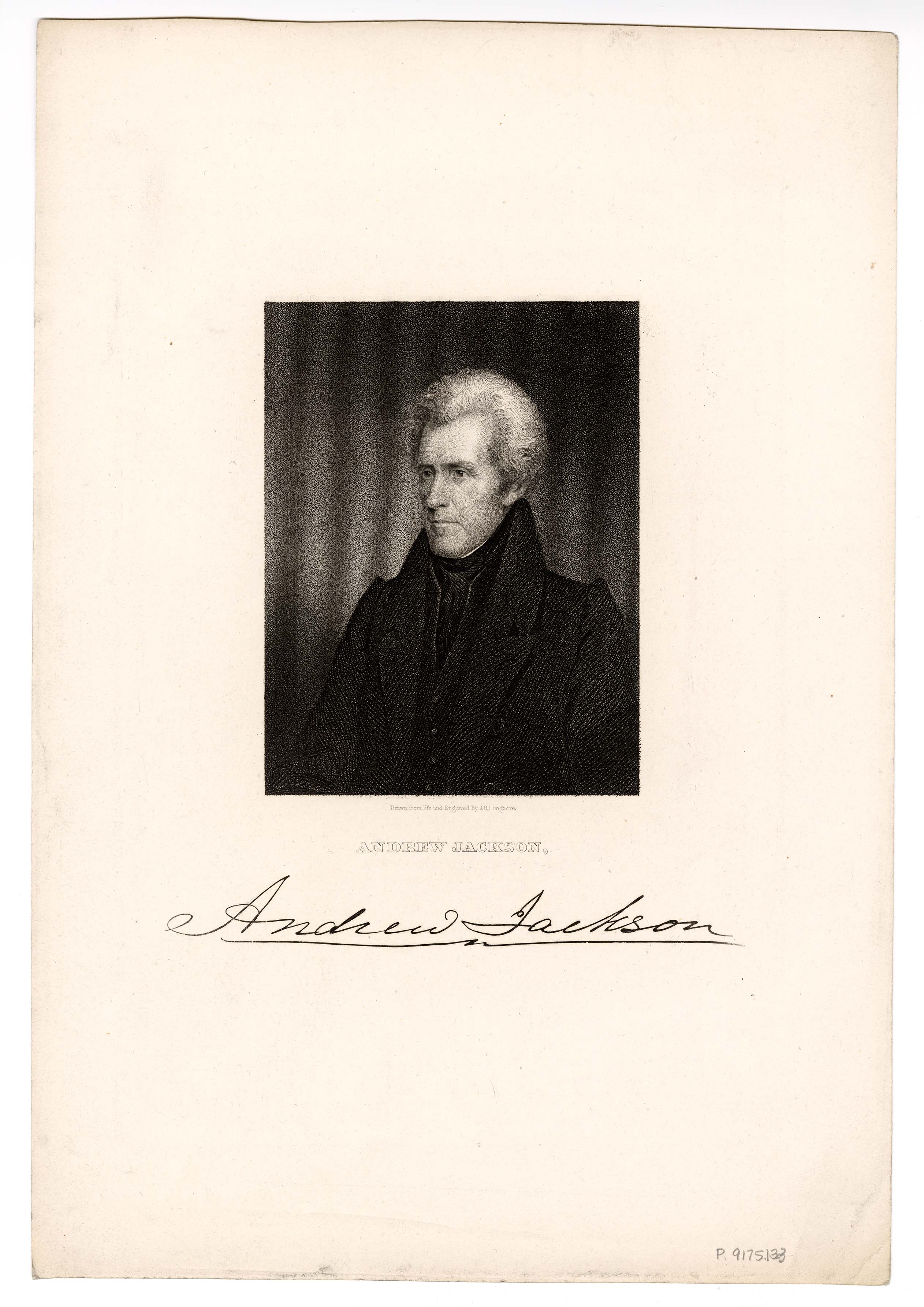James Barton Longacre, [Self-portrait] (ca. 1807). Watercolor.
The attribution of this self-portrait of James Barton Longacre (1794-1869) is based on similar, known watercolor portraits in other institutional collections. Longacre appears to be a young man in this portrait, most likely twelve or thirteen years of age. His talent for portraiture from the beginning is evident, and it enabled him to become a well-known and respected artist and engraver.
James Barton Longacre, Portrait engravings from Declaration of Independence (Philadelphia: John Binns, 1819). Trimmed engraving.
While apprenticing under George Murray (d. 1822) at his engraving firm Murray, Draper, Fairman & Co., Longacre executed his first published works of significance in the form of portraits of George Washington, Thomas Jefferson, and John Hancock. Publisher John Binns (1772-1860) used these portraits in his facsimile of the Declaration of Independence, which is regarded as the best decorative reproduction. This piece, along with other work that Longacre produced while apprenticing with Murray, would help to solidify his reputation as a skilled engraver.
James Barton Longacre, Portrait study of Indigenous persons (ca. 1840?). Watercolor.
This simple portrait study in watercolor by Longacre shows three distinct Native Americans wearing headdresses from profile and side views. This watercolor drawing is a great example of Longacre’s skill as a portraitist and also gives a glimpse into the inspiration for future coin designs.
James Barton Longacre, J. B. Longacre, Engraver (Philadelphia, ca. 1837). Engraving.
In the 19th century, the palm-sized trade card was a means of business and sometimes personal advertisement. This trade card promoting Longacre showcases his engraving skills and attention to detail, such as the portraits of George Washington and Benjamin Franklin, visible on the boat with the woman. Most likely this trade card was used while Longacre was promoting The National Portrait Gallery for Distinguished Americans as portraits of Franklin and Washington both appear in the series. Do you think you could work on such tiny images that require a great deal of precision?
James Barton Longacre after Edward W. Clay, “Wolf Hunt on the Ice” from American Turf Register and Sporting Magazine (New York: William T. Porter, 1843). Engraving.
A great example of the versatility of Longacre’s work is this illustration from American Turf Register and Sporting Magazine. He engraved this after a drawing done by Edward W. Clay (1799-1857). It was not uncommon for engravers to use a drawing or painting from another artist to create an engraving. Another aspect of this work to consider is the sense of motion and activity captured in the image. This style is a stark contrast to the portraits with which Longacre is often associated.
James Barton Longacre, “Andrew Jackson” from The National Portrait Gallery of Distinguished Americans (Philadelphia: Henry Perkins, 1833-1834). Engraving.
One can’t examine the career of James Barton Longacre without discussing The National Portrait Gallery of Distinguished Americans. After the success of working on engraved illustrations for other publications, Longacre set out to create a set of illustrated biographies of important American figures. Nearly ready to begin, he discovered that James Herring (1794-1867) was planning a similar project. After corresponding, the two men decided to make a joint effort to create a series together, which consisted of four volumes released between 1834 and 1839. Longacre had previously engraved Andrew Jackson’s portrait, however, this time it was drawn from life and engraved while Jackson was President.
